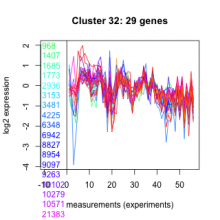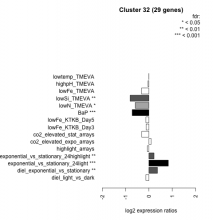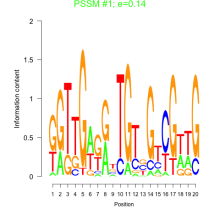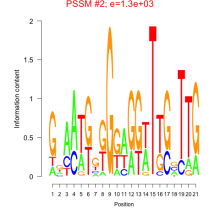260832 sigpep_I_bactThalassiosira pseudonana
| Chromosome | Product | Transcript Start | End | Strand | Short Name | |
|---|---|---|---|---|---|---|
| 260832 | chr_1 | sigpep_I_bact | 848592 | 849775 | + | sigpep_I_bact |
| NCBI ID | Ensembl Genomes exon ID |
|---|---|
| 7453468 | Thaps260832.4, Thaps260832.2, Thaps260832.3, Thaps260832.1 |
| Expression Profile | Conditional Changes | Cluster Dendrogram | Discovered Potential cis-Regulatory Motifs |
|---|---|---|---|
Thaps_hclust_0032 |
 |
 |
   |
| Normalized Mean Residue | Discovered Potential cis-Regulatory Motifs | |
|---|---|---|
|
Thaps_bicluster_0123 |
0.31 |
 0.14  1300 |
| KEGG description | KEGG Pathway |
|---|---|
| Not available | Not available |

Add comment